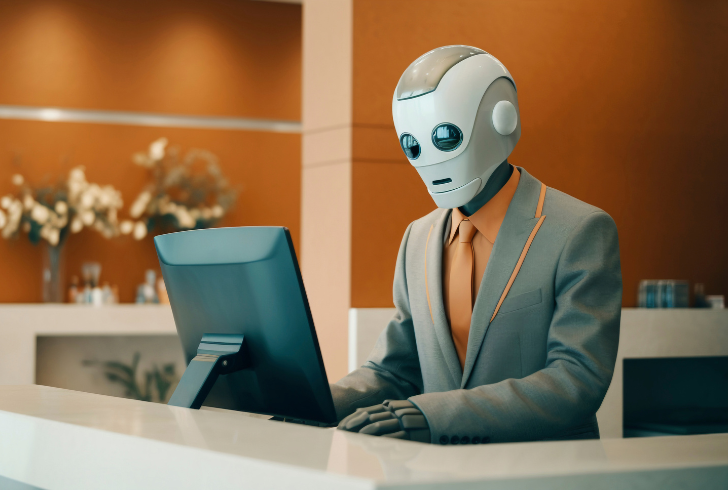The Rise of Agentic AI and Its Impact on Society and Business
Artificial intelligence has moved well beyond basic automation. What’s emerging now is a class of systems that can weigh context, adjust their behavior, and act on their own—an evolution that’s beginning to reshape how industries function and how people define intelligence itself.
This moment signals the rise of what many call Agentic AI: technology that no longer sits quietly in the background but steps forward as an active collaborator.
The Emergence of AI Agents
Earlier generations of AI were built to execute repetitive work—faster, cheaper, and with fewer errors than humans. Agentic AI expands the scope. These systems are structured to make judgments, respond to shifting conditions, and take responsibility for tasks that once required human oversight.
They can map out competitive strategies and identify risks.
They can hold conversations with customers, solve problems, and surface new sales opportunities.
They can flex across fields, from streamlining hospital operations to guiding logistics networks or tailoring learning in classrooms.
It’s a shift that elevates AI from tool to teammate.
The Dual Nature of Progress

Freepik | Businesses can use AI to improve decision-making, operate faster, and boost efficiency.
For businesses, that means cleaner data-driven choices, tighter operations, and reduced friction. For communities, it opens the door to quicker medical insights, classrooms tuned to individual needs, and smarter management of shared resources.
At the same time, questions arise. Some experts believe the trajectory could bring AI closer to general intelligence—where machines rival or surpass human cognitive ability. While that potential sparks excitement, it also raises concerns about the relevance of human decision-making in the future.
Yet even with AI’s growing intelligence, there are boundaries only humans can cross. Machines cannot replicate emotional depth, empathy, or cultural understanding. These traits remain the foundation of creativity, trust, and human connection.
Keeping People at the Center
The real decision lies not in what AI can technically achieve but in how it is positioned within society and business. Two paths are clear:
1. Allow algorithms to take over human judgment.
2. Use AI to augment human intelligence and creativity.
The second path is already showing its value. When integrated responsibly, AI systems adapt to humans—predicting needs, surfacing relevant data, and handling repetitive processes. This creates space for people to focus on higher-value work such as innovation, problem-solving, and building relationships.
Real-World Applications of Agentic AI
Agentic AI is no longer theoretical; it is already in motion across industries:
1. Retail & Supply Chains
Companies use AI to track inventory, optimize promotions, and ensure better stock management.
2. Customer Service
AI agents handle thousands of queries daily, allowing human teams to focus on complex or sensitive cases.
3. Healthcare & Nonprofits
Organizations employ AI to analyze data, match mentors with mentees, or assist in diagnostics—all while preserving the human role in final decisions.
4. Startups & Small Businesses
Even lean teams are expanding their reach by using AI agents to automate workflows and scale operations at levels once limited to large corporations.
Shaping the Future of Work

Freepik | As with past technological shifts, Agentic AI will both displace and generate new jobs.
Like past technological shifts—the printing press, the computer, the internet—the Agentic AI era will disrupt roles but also create new ones. Jobs will evolve, new skill sets will be required, and leadership will need to rethink hiring, training, and employee support.
The transition demands thoughtful action. Without accessible AI, societies risk a growing divide between those who benefit from the technology and those left behind. Treating AI as a universal right, accessible to all, ensures that opportunity is shared rather than concentrated.
Choosing the Human Path Forward
Cultural references often imagine a darker future, such as in the film “Minority Report”, where algorithms dictate human behavior and eliminate choice. That outcome is not inevitable. The future of AI depends on how it is designed and integrated today.
Position AI as a substitute for empathy, and it diminishes what people bring to the table. Build it to strengthen creativity, compassion, and collaboration, and it opens the door to a more balanced and rewarding society.
Building an Agentic Future
This moment isn’t defined by machines overtaking human thought but by the interplay of strengths. AI systems carry scale, speed, and raw processing power. Humans contribute judgment, ethics, and imagination. Working together, these elements can reconfigure industries, reshape professional paths, and make daily life more humane.
The responsibility is ours: to guide development with intent, to widen access rather than narrow it, and to ensure technology builds toward a collective good. The real breakthrough won’t be robots thinking like us—it will be a future where they help us think, act, and care more fully.